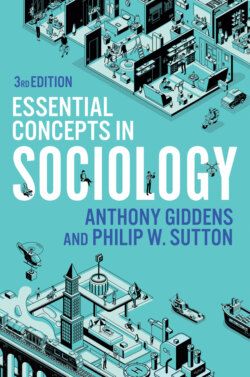Читать книгу Essential Concepts in Sociology - Anthony Giddens - Страница 22
Continuing Relevance
ОглавлениеFollowing the emergence of postmodern theorizing of an end to modernity, there have been reassessments of the concept. Some sociologists argue that we are entering a period not of postmodernity but of ‘late’ or ‘reflexive’ modernity (Giddens 1990). Rather than this sounding the death knell for modernity, it means revealing and facing up to its negative aspects, such as environmental damage, which make social life much less certain as both the previous faith in science as the way to truth and deference to authorities start to wane (Beck 2009). Jürgen Habermas (1983) argued that postmodern theorists gave up too early on what he saw as the ambitious project of modernity. Many of its essential features are only partially complete and need to be deepened rather than abandoned. There is much still to do in relation to ensuring meaningful democratic participation, equalizing life chances across the social classes, creating genuine gender equality, and so on. In sum, modernity is an unfinished project that deserves to be pursued, not allowed to wither away.
A more recent body of developing work is based on the notion of ‘multiple modernities’ – a critique of the illegitimate conflation of modernization with Westernization (Eisenstadt 2002). This idea counters the earlier assumption of a single, linear route to modernity and a standardized, uniform version based on Western societies. Empirical studies of modernity around the world suggest that this is wrong. In fact, there have been numerous diverse routes to modernity (Wagner 2012). Japanese modernity is markedly different from the American version, and it seems likely that the developing Chinese model will be different again. Some modernities, even that in the USA, have not become as secular as forecast but remain staunchly religious in character, while at the same time embracing industrialism and continuous technological development. Others, such as the Saudi Arabian version, are not only explicitly religious but also selective in relation to what they take from Western forms before adding their own unique aspects. The multiple modernities agenda seems likely to produce more realistic evaluations that may reinvigorate the concept into the future.
